The Future of Eco Friendly Solutions with Sustainable Packaging Suppliers
As the global shift towards environmentally responsible practices continues to intensify, Sustainable Packaging Suppliers play a pivotal role in shaping the future of eco-friendly solutions. According to a recent report by Smithers Pira, the sustainable packaging market is projected to reach $500 billion by 2027, driven by increasing consumer demand for products that minimize environmental impact. With approximately 60% of consumers actively seeking out sustainable packaging options, companies are compelled to adapt to these preferences or risk losing market relevance. Additionally, the World Economic Forum highlights that transitioning to sustainable packaging could reduce greenhouse gas emissions by up to 70% in the next decade.
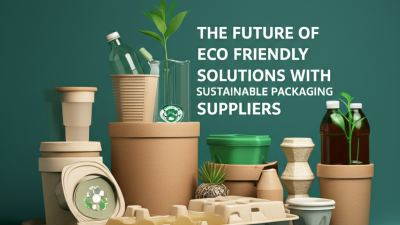
These trends not only underscore the importance of Sustainable Packaging Suppliers in enhancing brand reputation and compliance with regulatory standards but also highlight their critical role in fostering a circular economy that prioritizes sustainability and innovation.
Innovative Eco-Friendly Materials in Sustainable Packaging Solutions
The cosmetics industry is rapidly transforming its approach to packaging, prioritizing sustainable innovations that align with eco-friendly practices. Brands are now utilizing a variety of innovative materials, such as biodegradable plastics and seaweed-based solutions, that significantly lessen their environmental footprint. This shift is not just about reducing waste; it's also about creating packaging that can be reused, refilled, or even composted, thereby promoting a circular economy.
Moreover, the rising trend of zero-waste beauty solutions emphasizes the importance of thoughtful design. Companies are exploring refillable systems and smart packaging technologies that enhance user experience while minimizing resource consumption. These advancements in sustainable packaging not only provide consumers with more responsible choices, but they also inspire further innovation across various sectors, paving the way for a future where eco-friendly materials are the norm rather than the exception. As consumer awareness grows, the demand for sustainable packaging solutions continues to drive creative developments in the industry.
The Future of Eco Friendly Solutions with Sustainable Packaging Suppliers
This chart illustrates the increasing adoption of innovative eco-friendly materials in sustainable packaging solutions over the past five years. As awareness of environmental issues grows, more companies are integrating sustainable practices into their operations.
The Role of Technology in Advancing Sustainable Packaging Practices
In the realm of sustainable packaging, technology plays a pivotal role in driving advancements that align with eco-friendly solutions. Recent trends indicate that the global sustainable packaging market is projected to reach approximately $600 billion by 2027, reflecting a robust compound annual growth rate (CAGR) of over 6%. This growth is largely driven by increasing consumer awareness and regulatory pressure for environmentally responsible practices. Companies are now leveraging technologies like artificial intelligence and blockchain to optimize their supply chains and enhance transparency, ensuring that their packaging solutions not only meet sustainability goals but also resonate with eco-conscious consumers.
The recent sustainability report from a leading beauty brand highlights the importance of the “shared beauty” concept, emphasizing the dual responsibility of businesses to both the environment and society. By integrating innovative materials and reducing waste through advanced processing techniques, companies can significantly lower their carbon footprints. For instance, recent studies show that by adopting biodegradable plastics and reusable packaging systems, businesses can reduce their emissions by up to 30%. As technology continues to evolve, it enables companies to experiment with new materials and processes, ultimately creating sustainable packaging solutions that not only fulfill consumer demands but also contribute positively to the planet.
Collaboration Opportunities Between Brands and Eco-Friendly Suppliers
As brands increasingly recognize the importance of sustainability, collaboration with eco-friendly packaging suppliers becomes crucial in driving meaningful change. By partnering with these suppliers, brands can access innovative materials and practices that minimize environmental impact while meeting consumer demand for greener alternatives. This collaboration encourages knowledge sharing, where brands can learn about cutting-edge biodegradable materials or recycling technologies, leading to more effective and sustainable packaging solutions.
Furthermore, these partnerships can enhance brand reputation and consumer loyalty. Today's consumers are more eco-conscious than ever and often prefer brands that demonstrate a commitment to sustainability. By working closely with eco-friendly suppliers, brands can not only improve their product packaging but also create compelling narratives around their environmental initiatives. This synergy not only helps in achieving sustainability goals but also positions brands as leaders in corporate responsibility, making a significant positive impact on both the market and the planet.
Consumer Trends Influencing the Shift Towards Sustainable Packaging
The shift towards sustainable packaging is significantly influenced by evolving consumer trends. As awareness of environmental issues grows, consumers are increasingly opting for products packaged in eco-friendly materials. This demand drives suppliers to innovate and adopt sustainable practices. For example, the market for single-use cups and lids is expected to reach $466.65 million by 2025, reflecting a shift towards more sustainable alternatives as consumers become more environmentally conscious.
Moreover, the growth of the fast-moving consumer goods (FMCG) packaging market, projected to rise from $823.83 billion in 2024 to $1.34 trillion by 2032, highlights a robust trend. The demand for fresh food packaging is also on the rise, driven by consumers' increasing focus on food safety and quality. These trends indicate a clear transition towards sustainable options, ensuring that suppliers prioritize eco-friendly solutions to meet the evolving preferences of conscientious consumers. The future of sustainable packaging thus looks promising, with innovation at the forefront of meeting market demand.
Case Studies of Successful Eco-Friendly Packaging Implementations
The shift towards eco-friendly solutions in packaging is gaining momentum, with numerous companies successfully implementing sustainable practices. One notable case study involves a firm that adopted biodegradable materials, resulting in a significant reduction in plastic waste. Their innovative approach not only appealed to environmentally conscious consumers but also improved their brand image, showcasing the potential financial benefits of sustainability.
Investors often hesitate, thinking that eco-friendly practices could hinder profitability. However, several successful implementations have demonstrated that sustainability can lead to enhanced customer loyalty and market differentiation. Companies investing in green technologies are often attracting a new segment of consumers willing to pay a premium for environmentally responsible products.
**Tips:** When considering eco-friendly packaging suppliers, look for those who have proven case studies or certifications that validate their sustainability claims. Additionally, engage with suppliers who can offer insights into the long-term cost benefits of sustainable materials, as they often prove to be more economical over time. Lastly, consider collaborative partnerships with suppliers who prioritize innovation in eco-friendly solutions, ensuring that your packaging evolves with changing consumer preferences and regulatory demands.
Related Posts
-

Comprehensive Insights on Choosing Planet Friendly Packaging for Global Sourcing
-
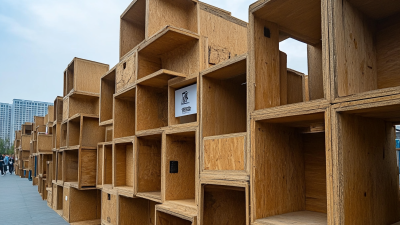
Top 10 Sustainable Packaging Manufacturers from China at the 137th Canton Fair
-
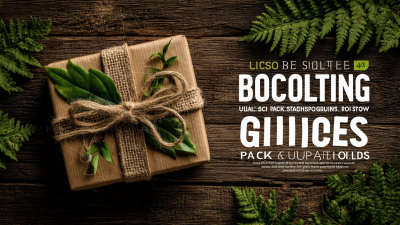
Ultimate Guide to Best Eco Packaging Solutions for Sustainable Business Growth
-
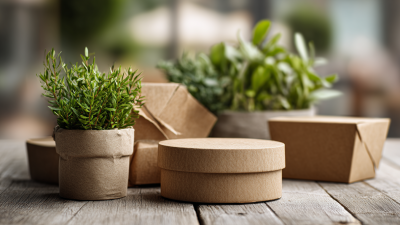
Unlocking the Future: How Sustainable Packaging Suppliers Are Revolutionizing Eco-Friendly Innovation
-

5 Innovative Folding Carton Solutions Revolutionizing Global Supply Chains in 2023
-
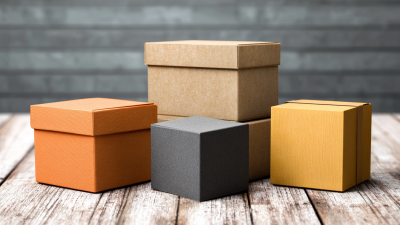
What is Packaging Printing? Exploring Trends and Innovations in a $400 Billion Industry
